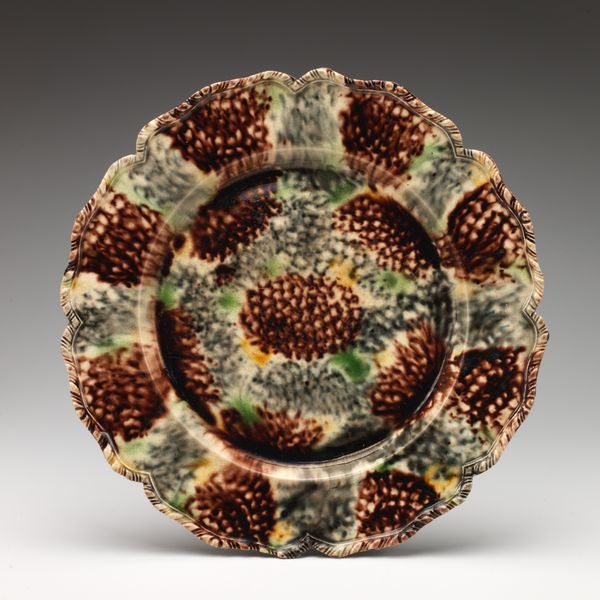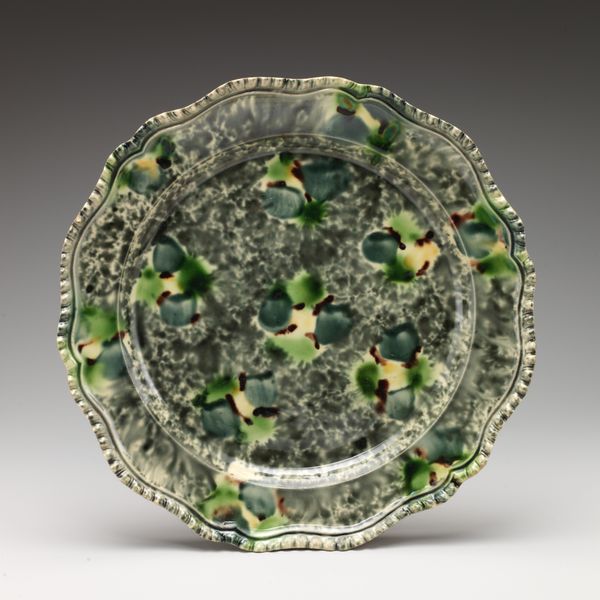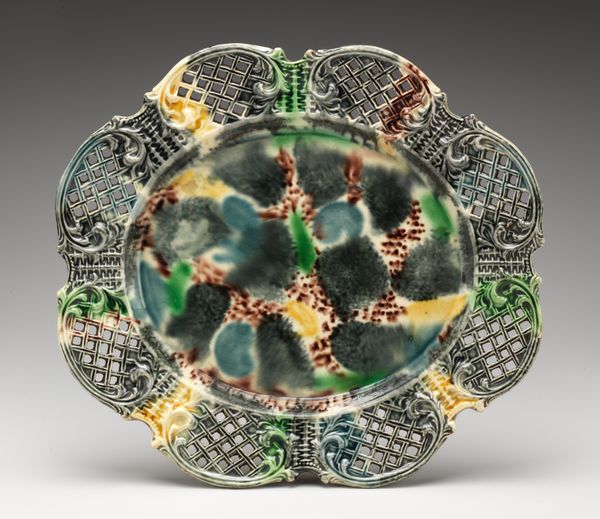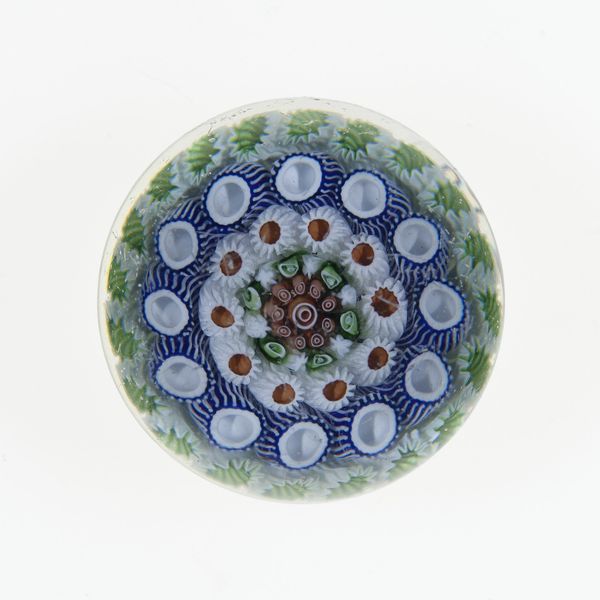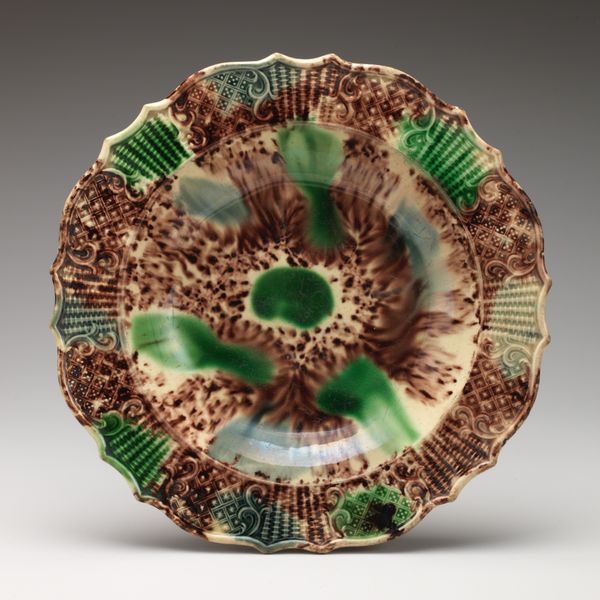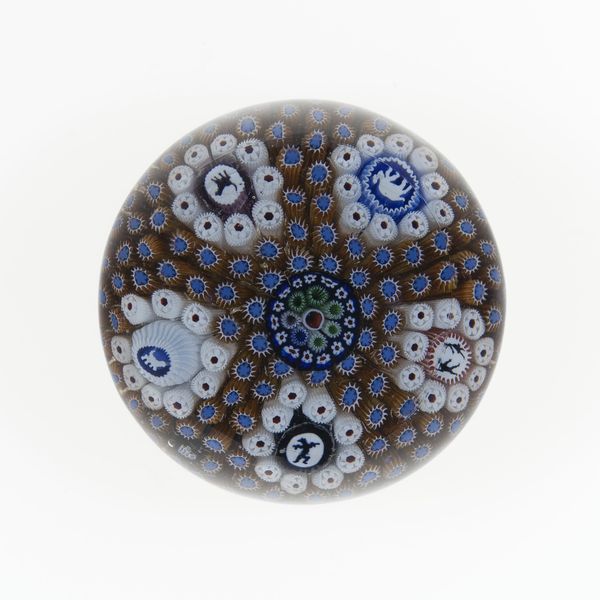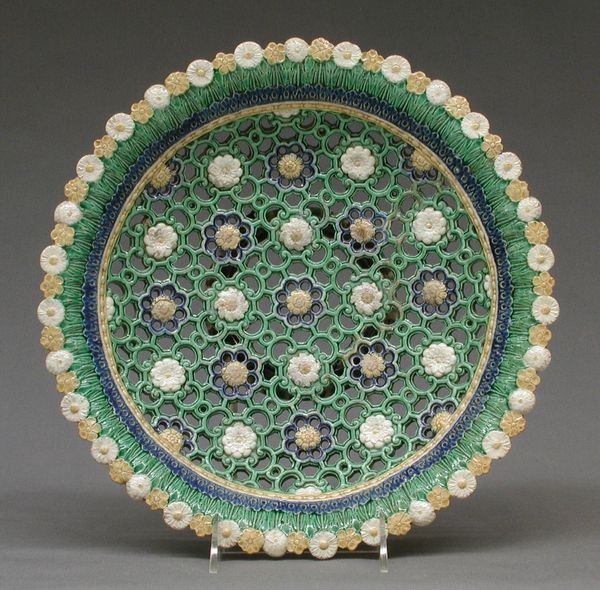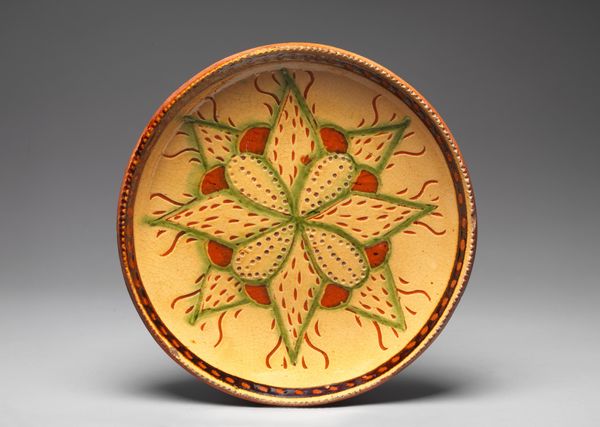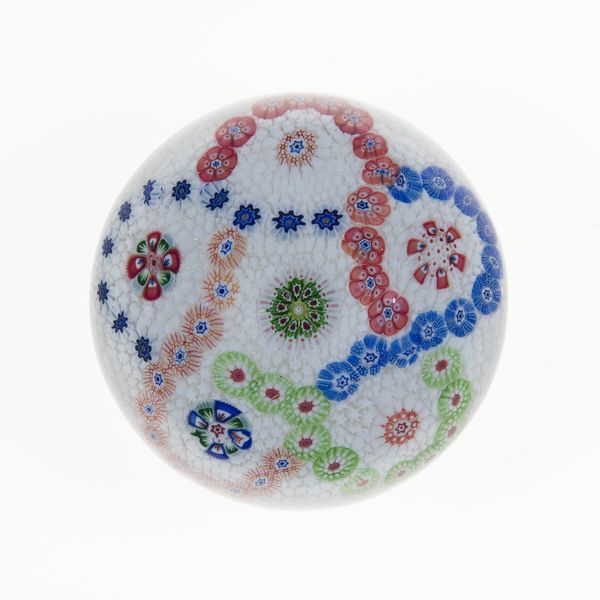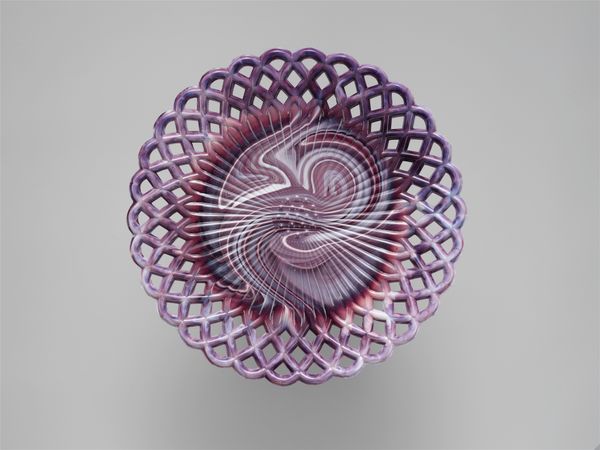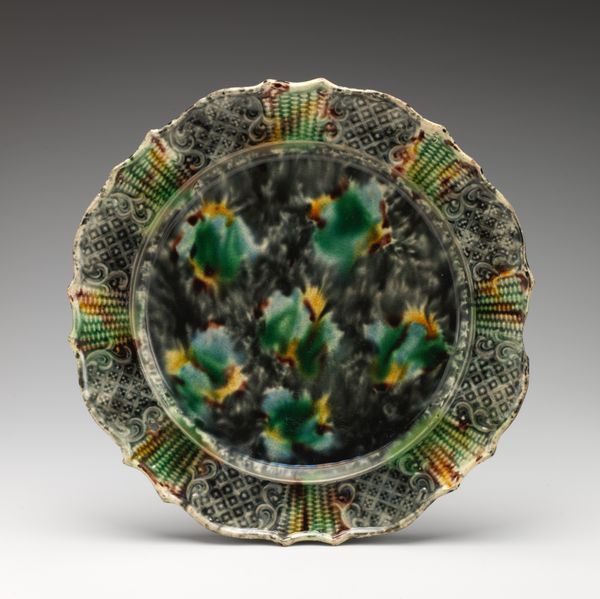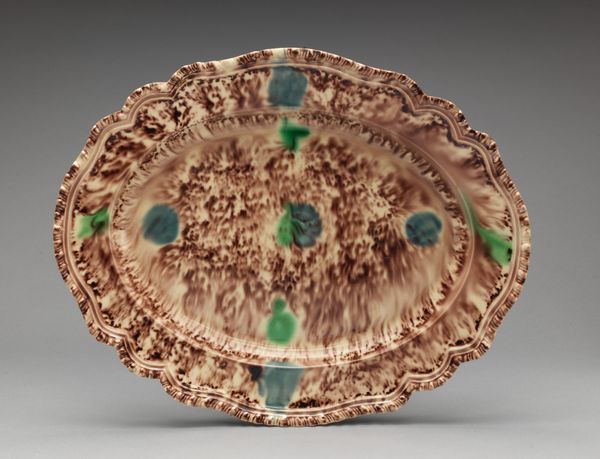
ceramic, earthenware, sculpture
#
ceramic
#
floral element
#
earthenware
#
sculpture
#
decorative-art
#
rococo
Dimensions: Diameter: 9 5/8 in. (24.4 cm)
Copyright: Public Domain
Editor: This decorative plate, crafted between 1755 and 1765, is earthenware, placing it within the Whieldon-type ceramics. I am intrigued by the deliberate glazing and woven edge, what’s your take on this kind of piece? Curator: What grabs me immediately is how this piece challenges the high art/low craft divide. It’s functional, made with readily available materials like earthenware. Yet, the glazing technique and Rococo details indicate skilled labor and deliberate design choices that elevated the material. Consider the consumption aspect—who was buying these? What sort of meals were placed upon them? Editor: Right, it's not something precious locked away, but a daily item with artistic flair! How would the means of its production affect the final form and its social place? Curator: Well, earthenware was relatively cheap, enabling mass production. This plate could have found its way into middle-class homes aspiring to imitate aristocratic lifestyles, and perhaps were used in tandem with other such materials. Look at that molded basketweave border; that would require significant labor hours to create and might not have been easily repaired. Do you think the molded elements cheapen the item? Editor: Not really, knowing now how this kind of craft became accessible, rather, they give character and also bring into the play the concept of skilled labour being used in more functional or repeated objects. The glaze application seems critical, too. Curator: Exactly. How the glazes interact speaks to material processes. Those mottled greens and yellows -- likely lead glazes -- highlight the chemical reactions in the kiln, something usually suppressed in ‘high’ art pottery. Considering the production process makes us see the art historical implications. Editor: That makes it far more compelling; now it feels connected to a web of people, materials, and history. Curator: Yes, looking beyond the mere aesthetics lets us understand the social and material landscape. Hopefully, we both learnt more in this deep-dive!
Comments
No comments
Be the first to comment and join the conversation on the ultimate creative platform.
